Blackberry 2012 Annual Report Download - page 57
Download and view the complete annual report
Please find page 57 of the 2012 Blackberry annual report below. You can navigate through the pages in the report by either clicking on the pages listed below, or by using the keyword search tool below to find specific information within the annual report.-
 1
1 -
 2
2 -
 3
3 -
 4
4 -
 5
5 -
 6
6 -
 7
7 -
 8
8 -
 9
9 -
 10
10 -
 11
11 -
 12
12 -
 13
13 -
 14
14 -
 15
15 -
 16
16 -
 17
17 -
 18
18 -
 19
19 -
 20
20 -
 21
21 -
 22
22 -
 23
23 -
 24
24 -
 25
25 -
 26
26 -
 27
27 -
 28
28 -
 29
29 -
 30
30 -
 31
31 -
 32
32 -
 33
33 -
 34
34 -
 35
35 -
 36
36 -
 37
37 -
 38
38 -
 39
39 -
 40
40 -
 41
41 -
 42
42 -
 43
43 -
 44
44 -
 45
45 -
 46
46 -
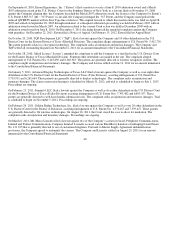 47
47 -
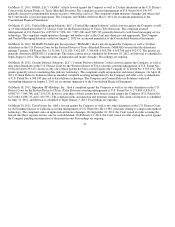 48
48 -
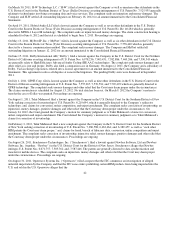 49
49 -
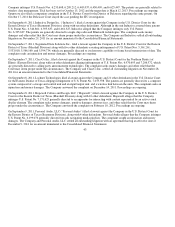 50
50 -
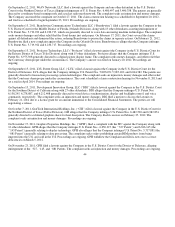 51
51 -
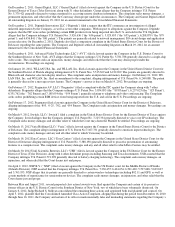 52
52 -
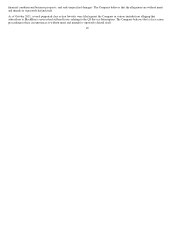 53
53 -
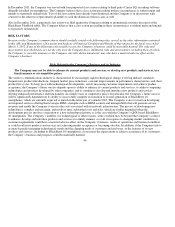 54
54 -
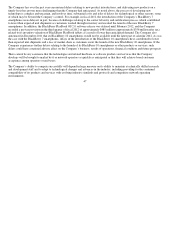 55
55 -
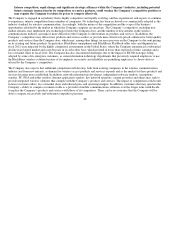 56
56 -
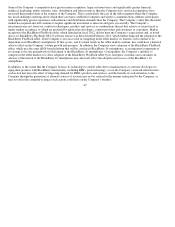 57
57 -
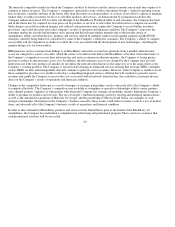 58
58 -
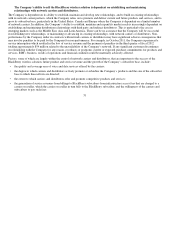 59
59 -
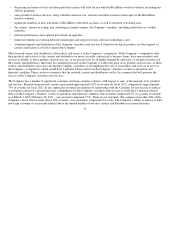 60
60 -
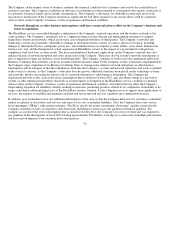 61
61 -
 62
62 -
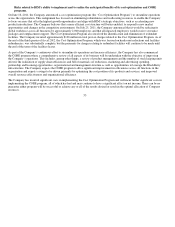 63
63 -
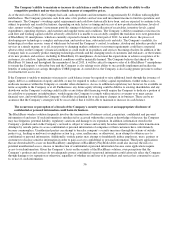 64
64 -
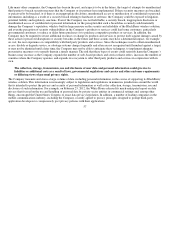 65
65 -
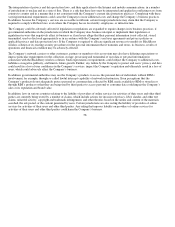 66
66 -
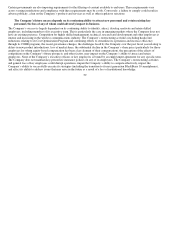 67
67 -
 68
68 -
 69
69 -
 70
70 -
 71
71 -
 72
72 -
 73
73 -
 74
74 -
 75
75 -
 76
76 -
 77
77 -
 78
78 -
 79
79 -
 80
80 -
 81
81 -
 82
82 -
 83
83 -
 84
84 -
 85
85 -
 86
86 -
 87
87 -
 88
88 -
 89
89 -
 90
90 -
 91
91 -
 92
92 -
 93
93 -
 94
94 -
 95
95 -
 96
96 -
 97
97 -
 98
98 -
 99
99 -
 100
100 -
 101
101 -
 102
102 -
 103
103 -
 104
104 -
 105
105 -
 106
106 -
 107
107 -
 108
108 -
 109
109 -
 110
110 -
 111
111 -
 112
112 -
 113
113 -
 114
114 -
 115
115 -
 116
116 -
 117
117 -
 118
118 -
 119
119 -
 120
120 -
 121
121 -
 122
122 -
 123
123 -
 124
124 -
 125
125 -
 126
126 -
 127
127 -
 128
128 -
 129
129 -
 130
130 -
 131
131 -
 132
132 -
 133
133 -
 134
134 -
 135
135 -
 136
136 -
 137
137 -
 138
138 -
 139
139 -
 140
140 -
 141
141 -
 142
142 -
 143
143 -
 144
144 -
 145
145 -
 146
146 -
 147
147 -
 148
148 -
 149
149 -
 150
150 -
 151
151 -
 152
152 -
 153
153 -
 154
154 -
 155
155 -
 156
156 -
 157
157 -
 158
158 -
 159
159 -
 160
160 -
 161
161 -
 162
162 -
 163
163 -
 164
164 -
 165
165 -
 166
166 -
 167
167 -
 168
168 -
 169
169 -
 170
170 -
 171
171 -
 172
172 -
 173
173 -
 174
174 -
 175
175 -
 176
176 -
 177
177 -
 178
178 -
 179
179 -
 180
180 -
 181
181 -
 182
182 -
 183
183 -
 184
184 -
 185
185 -
 186
186 -
 187
187 -
 188
188 -
 189
189 -
 190
190 -
 191
191 -
 192
192 -
 193
193 -
 194
194 -
 195
195 -
 196
196 -
 197
197 -
 198
198 -
 199
199 -
 200
200 -
 201
201 -
 202
202 -
 203
203 -
 204
204 -
 205
205 -
 206
206 -
 207
207 -
 208
208 -
 209
209 -
 210
210 -
 211
211 -
 212
212 -
 213
213 -
 214
214 -
 215
215 -
 216
216 -
 217
217 -
 218
218 -
 219
219 -
 220
220 -
 221
221 -
 222
222 -
 223
223 -
 224
224 -
 225
225 -
 226
226 -
 227
227 -
 228
228 -
 229
229 -
 230
230 -
 231
231 -
 232
232 -
 233
233 -
 234
234 -
 235
235 -
 236
236 -
 237
237 -
 238
238 -
 239
239 -
 240
240 -
 241
241 -
 242
242 -
 243
243 -
 244
244 -
 245
245 -
 246
246 -
 247
247 -
 248
248 -
 249
249 -
 250
250 -
 251
251 -
 252
252 -
 253
253 -
 254
254 -
 255
255 -
 256
256 -
 257
257 -
 258
258 -
 259
259 -
 260
260 -
 261
261 -
 262
262 -
 263
263 -
 264
264 -
 265
265 -
 266
266 -
 267
267 -
 268
268 -
 269
269 -
 270
270 -
 271
271 -
 272
272 -
 273
273 -
 274
274
 |
 |

Some of the Company’s competitors have greater name recognition, larger customer bases and significantly greater financial,
technical, marketing, public relations, sales, distribution and other resources than the Company does, and such competitors have
increased their market share at the expense of the Company. This is particularly the case in the tablet segment where the Company
has faced challenges entering and in which there are many established computer and wireless communications industry participants
with significantly greater experience, infrastructure and distribution channels than the Company. The Company’s entry into the tablet
market has required and will continue to require significant investment to innovate and grow successfully. The Company’s
investments may not, however, result in technologies, products and services or combinations thereof that achieve or retain broad or
timely market acceptance or which are preferred by application developers, content providers and customers or consumers. Market
reception to the BlackBerry PlayBook tablet, which launched in fiscal 2012, did not meet the Company’s expectations and, as noted
above, its BlackBerry PlayBook OS 2.0 software release was delayed until February 2012, which further impacted the adoption of the
BlackBerry PlayBook tablet. If the Company is not successful in competing in the tablet market, its business will continue to be
dependent on its BlackBerry smartphones. If that occurs, and if current trends in the tablet market continue, this could have a material
adverse effect on the Company’s future growth and prospects. In addition, the Company views adoption of the BlackBerry PlayBook
tablet, which uses the same QNX-based platform that will be, used in its BlackBerry 10 smartphones, as an important component of
its strategy to lay the groundwork for the launch of the BlackBerry 10 smartphones. Consequently, the Company’s inability to
compete in the tablet market or to drive adoption of the BlackBerry PlayBook tablet by its enterprise customers and consumers in
advance of the launch of the BlackBerry 10 smartphones may adversely affect the adoption and success of the BlackBerry 10
smartphones.
In addition, to the extent that the Company licenses its technology to enable other device manufacturers or software developers to
equip their products with BlackBerry functionality, including RIM’s push technology, or use the Company’s network infrastructure,
such action may have the effect of impacting demand for RIM’s products and services, and the benefits of such initiatives to the
Company through the generation of alternate sources of revenue may not be realized in the manner anticipated by the Company, or
may not offset the competitive impact such actions could have on the Company’s business.
49
